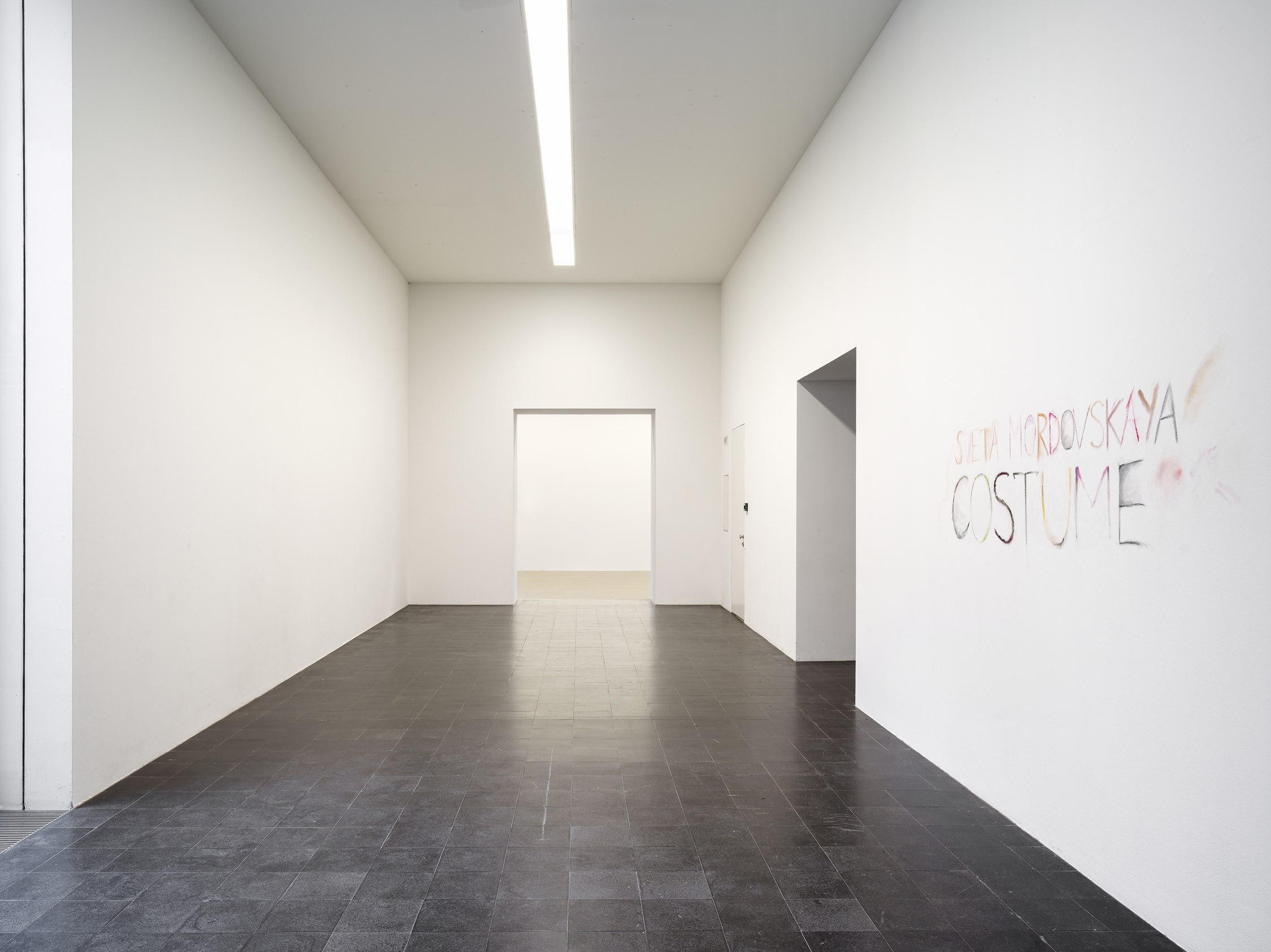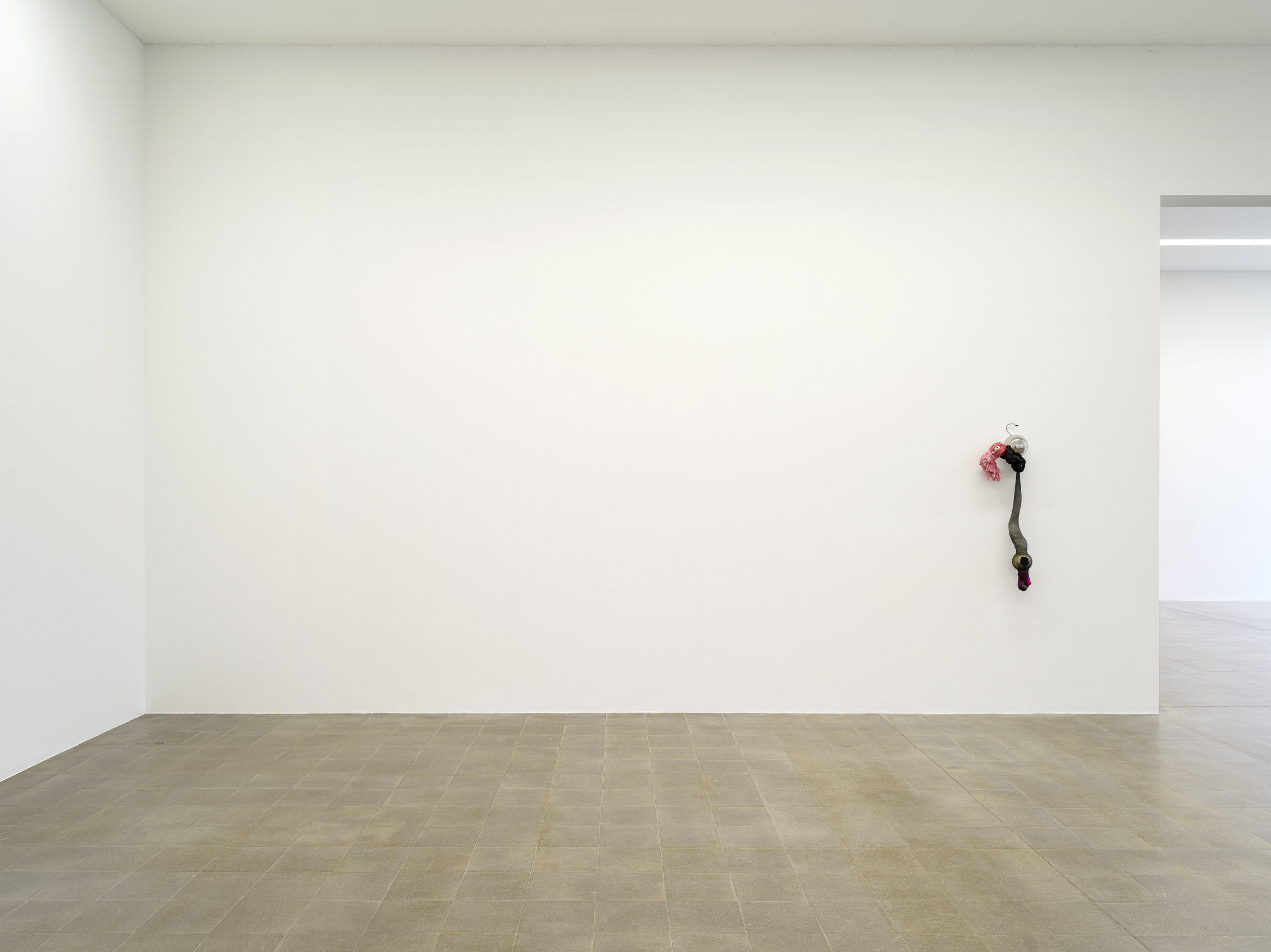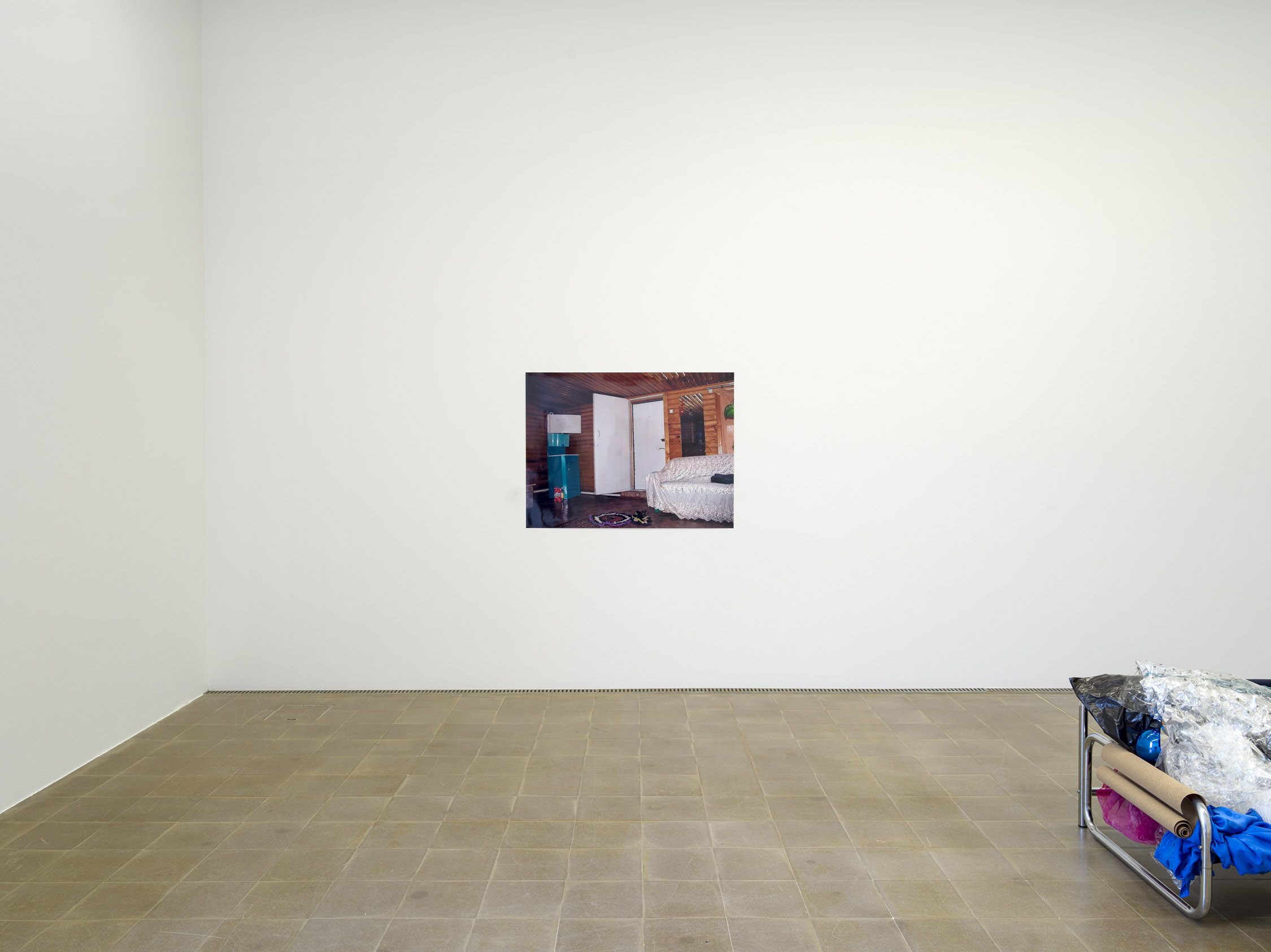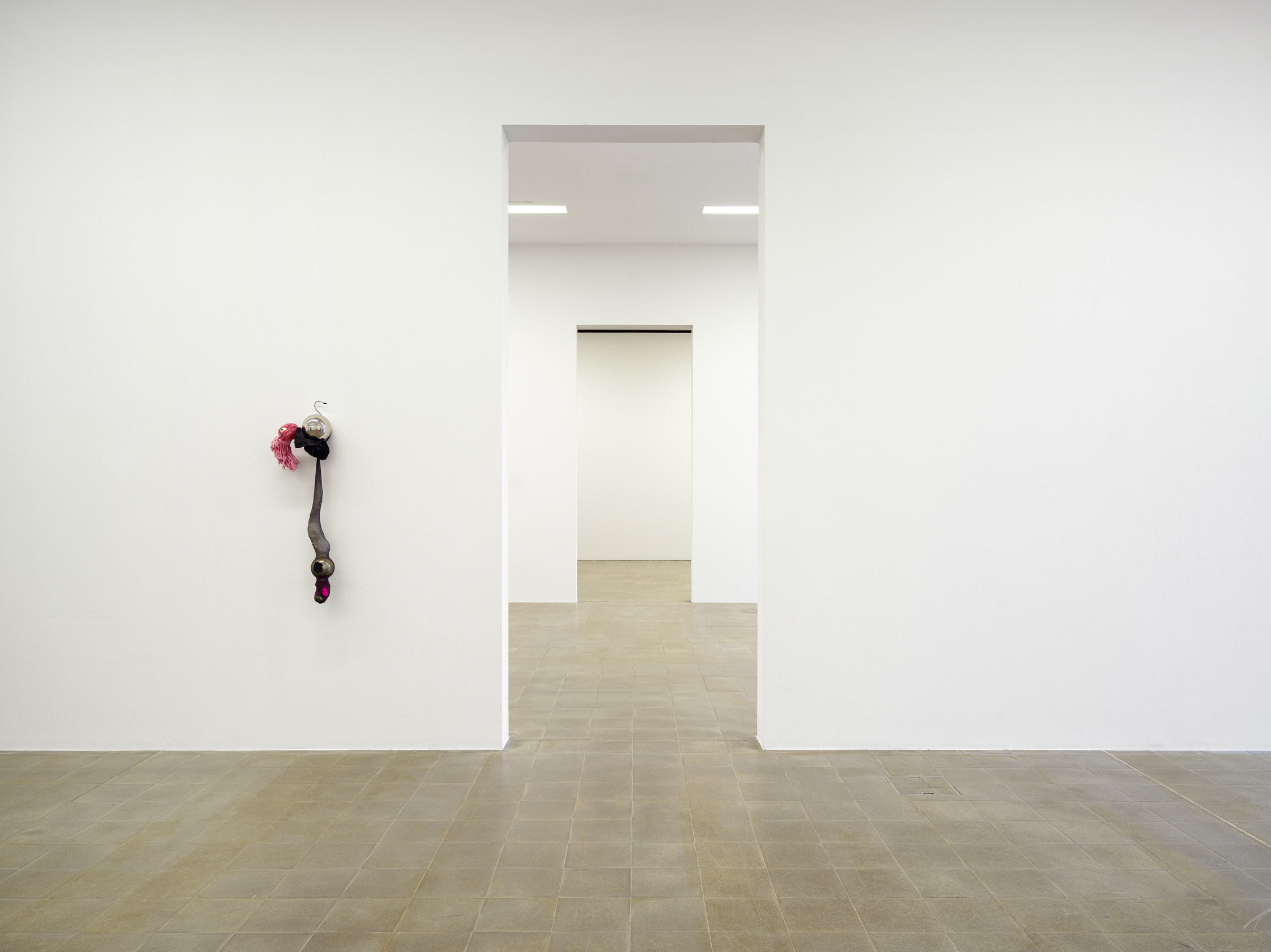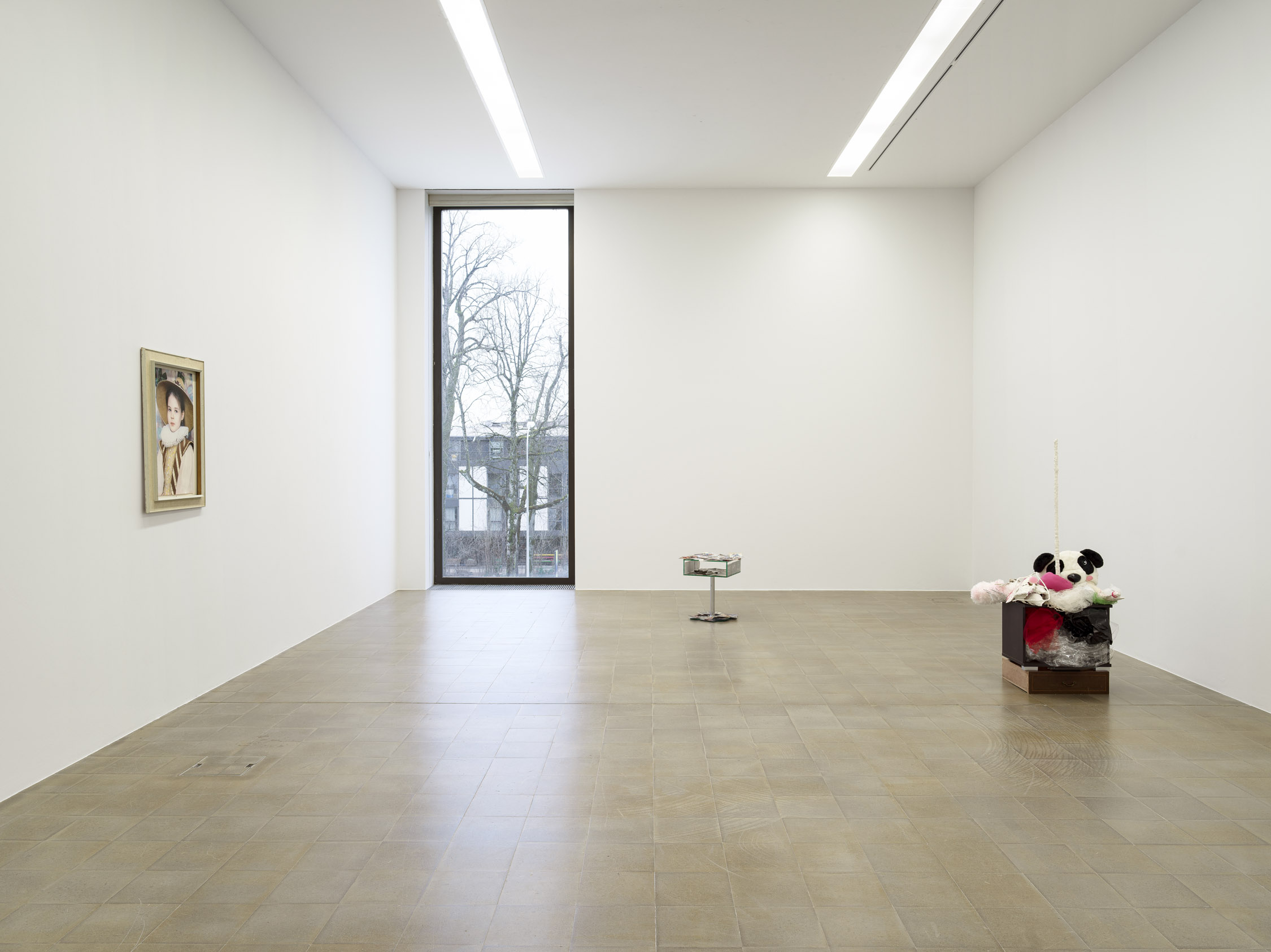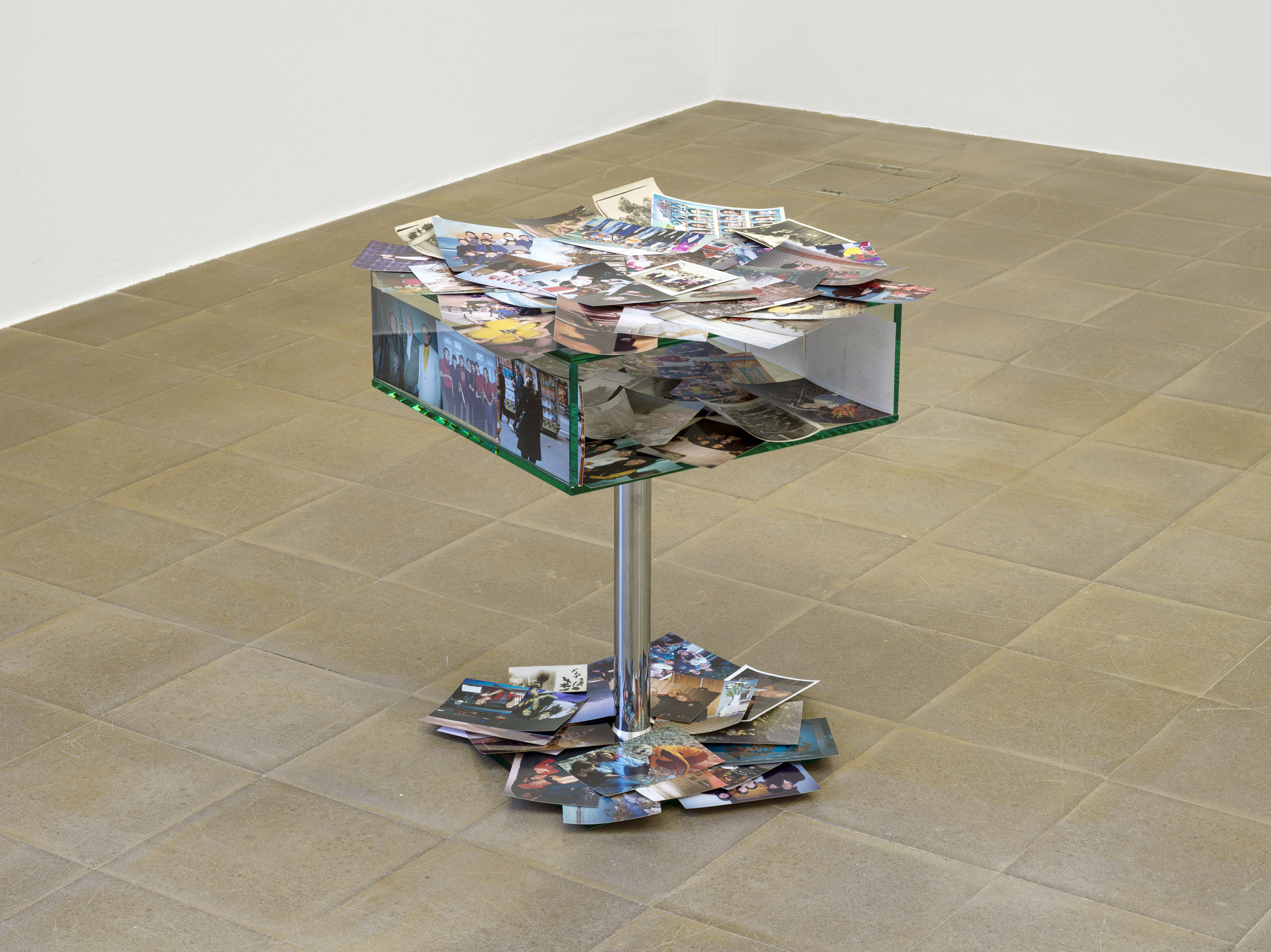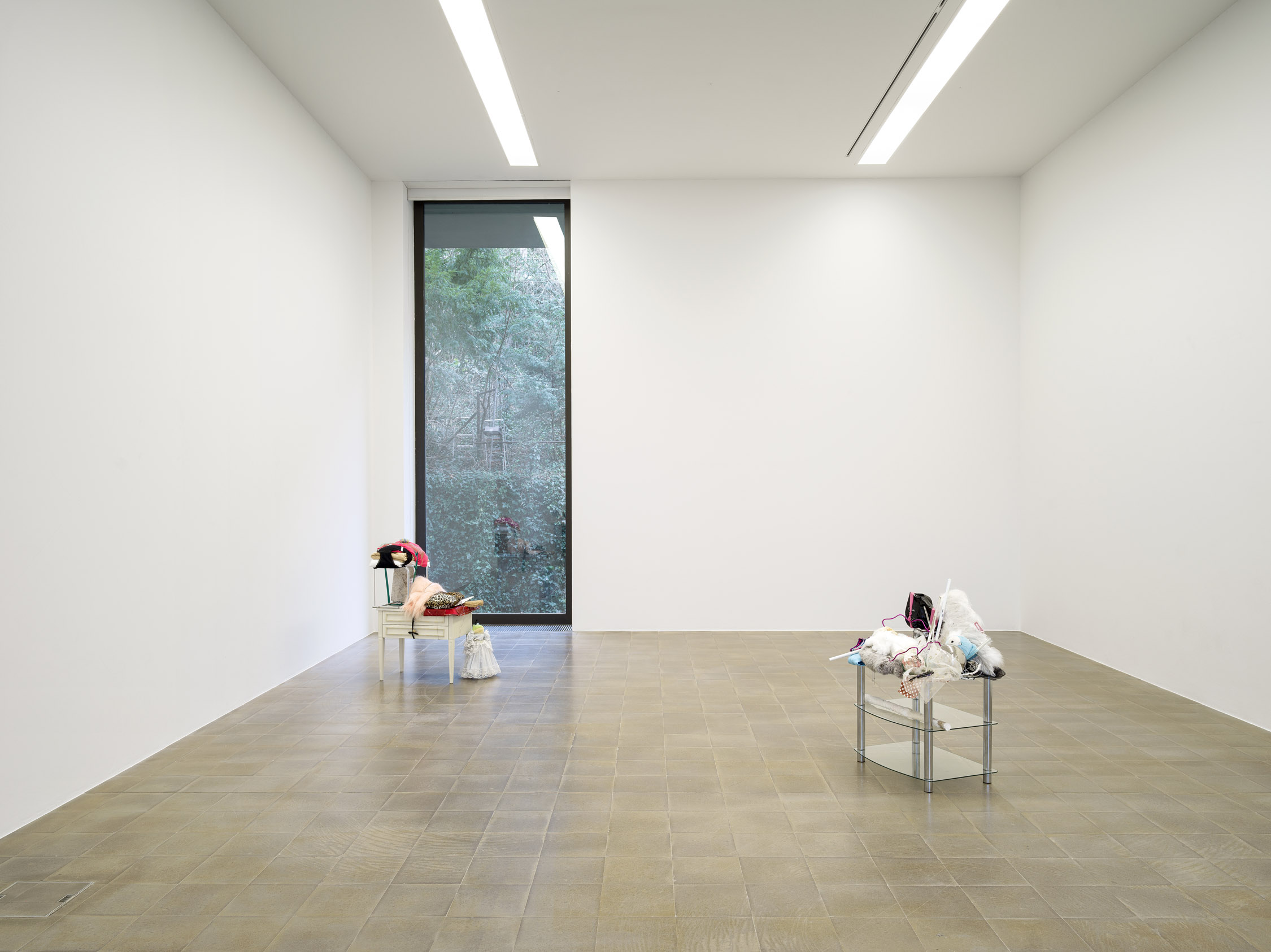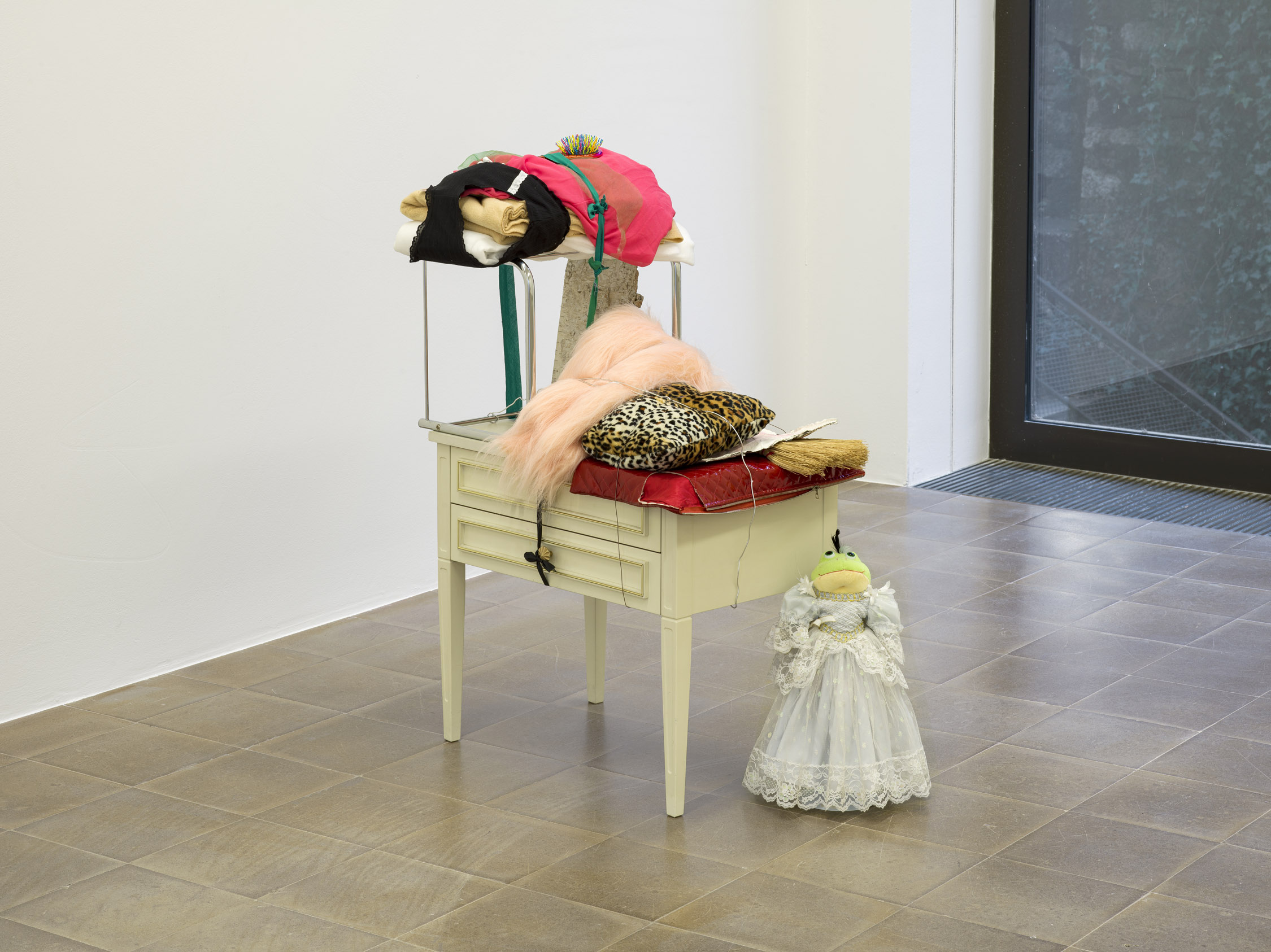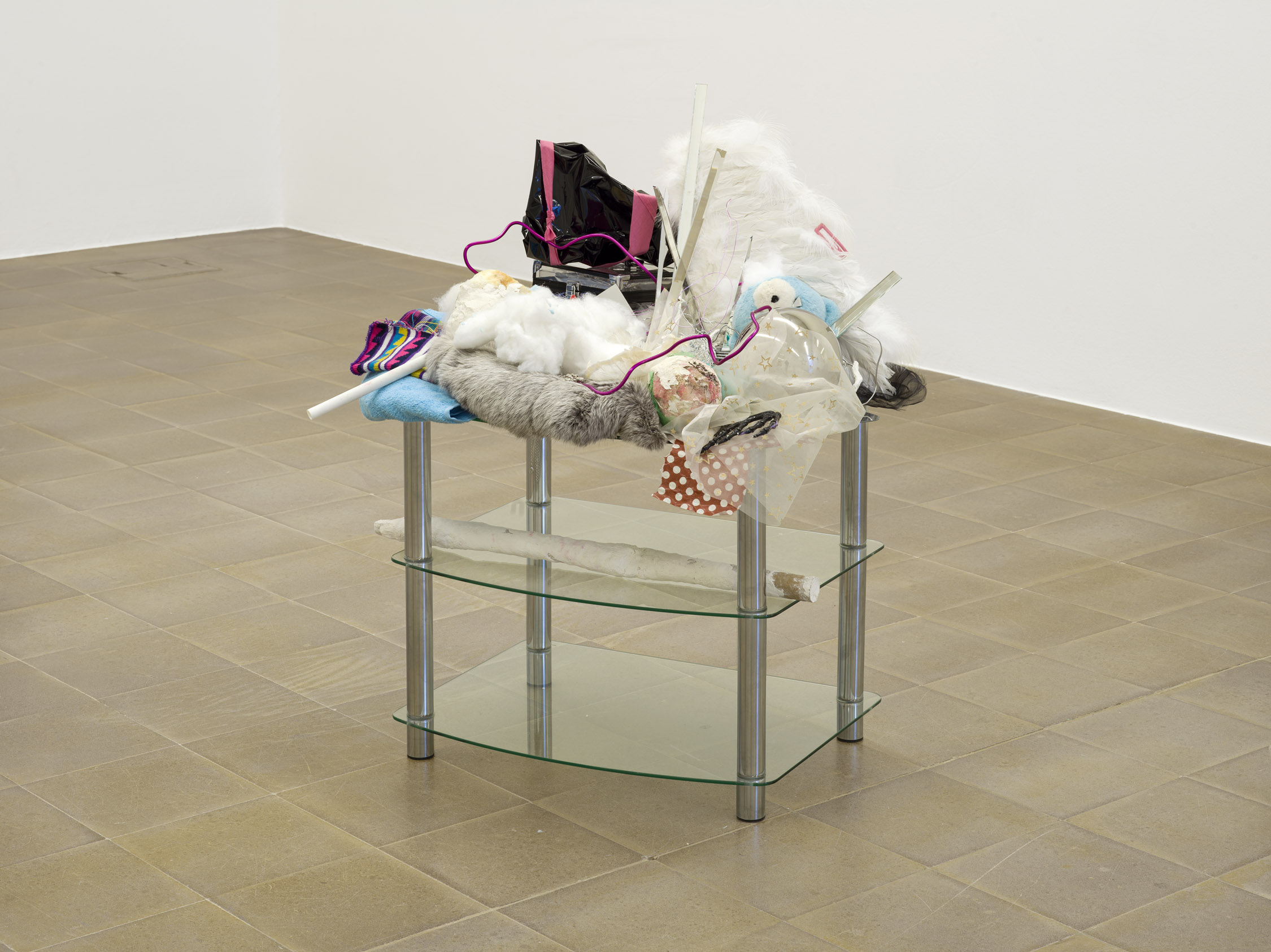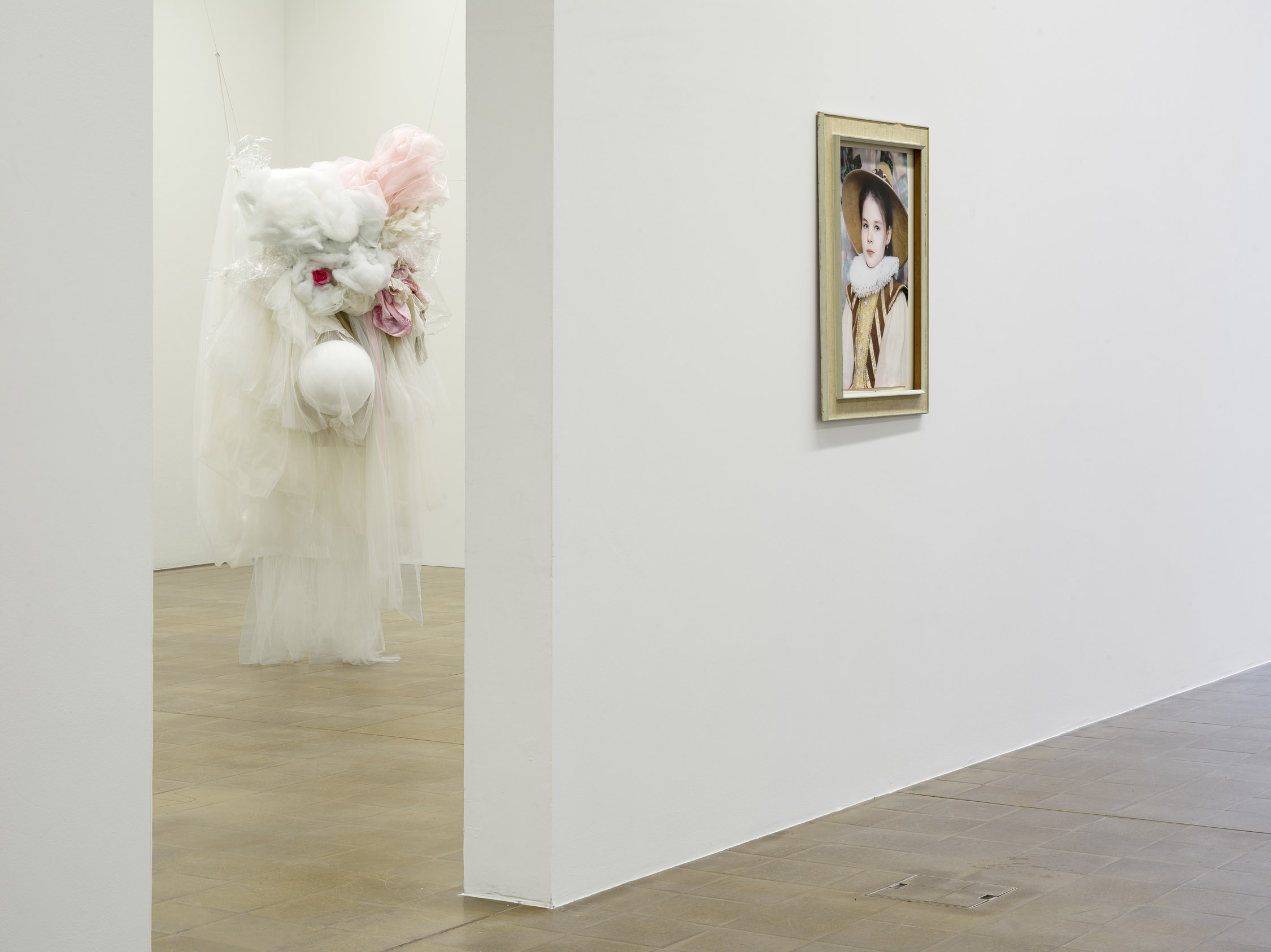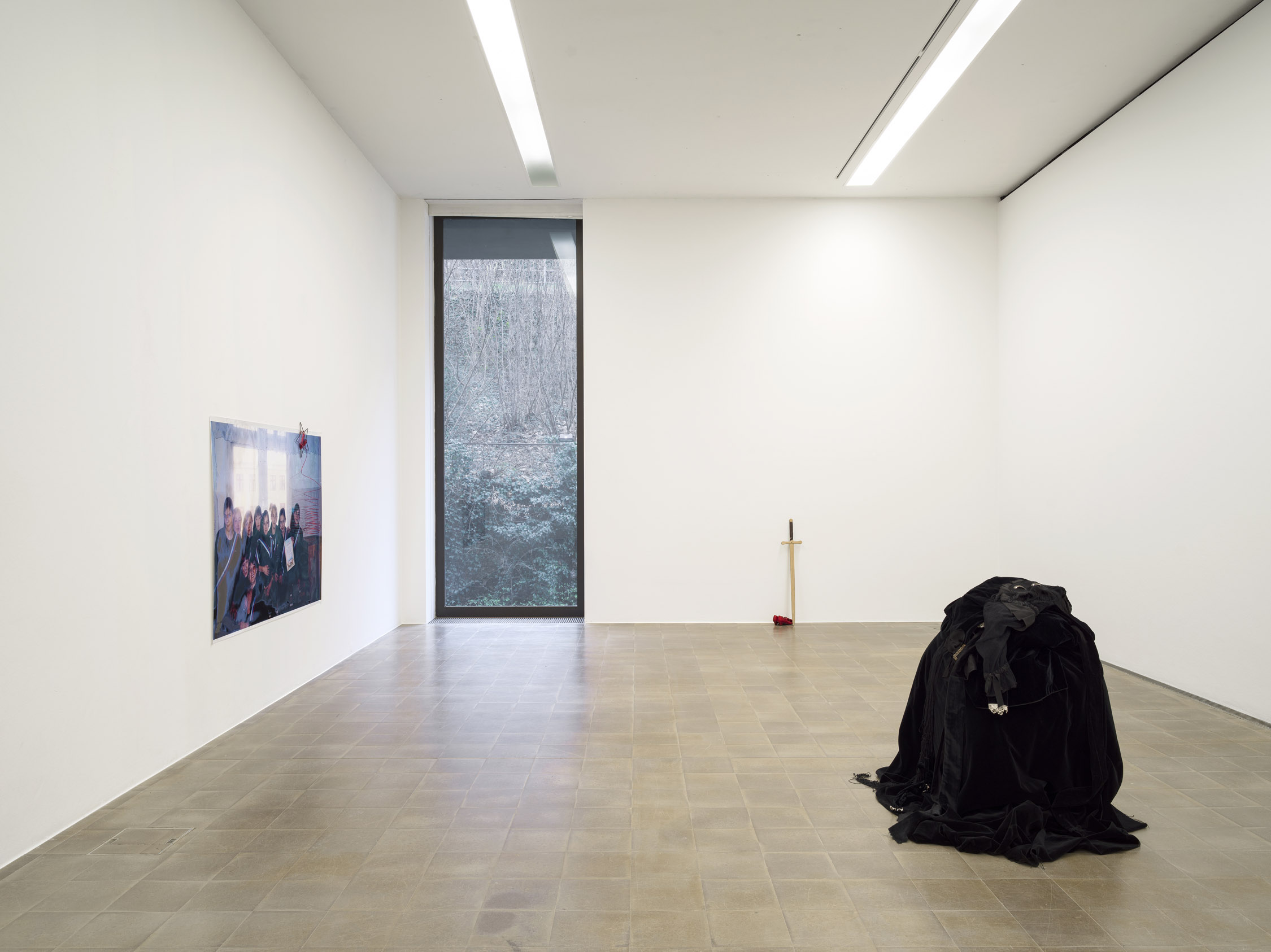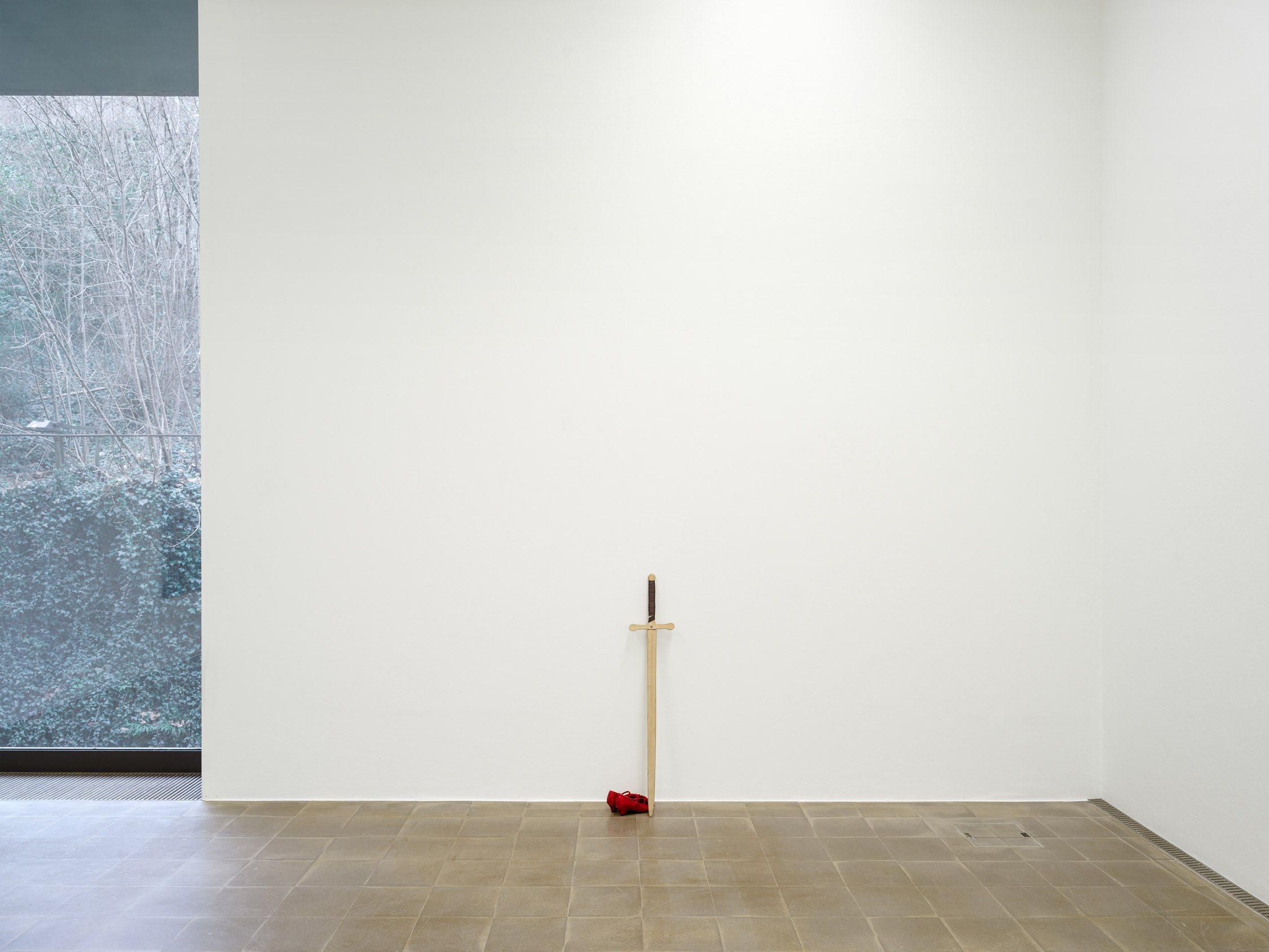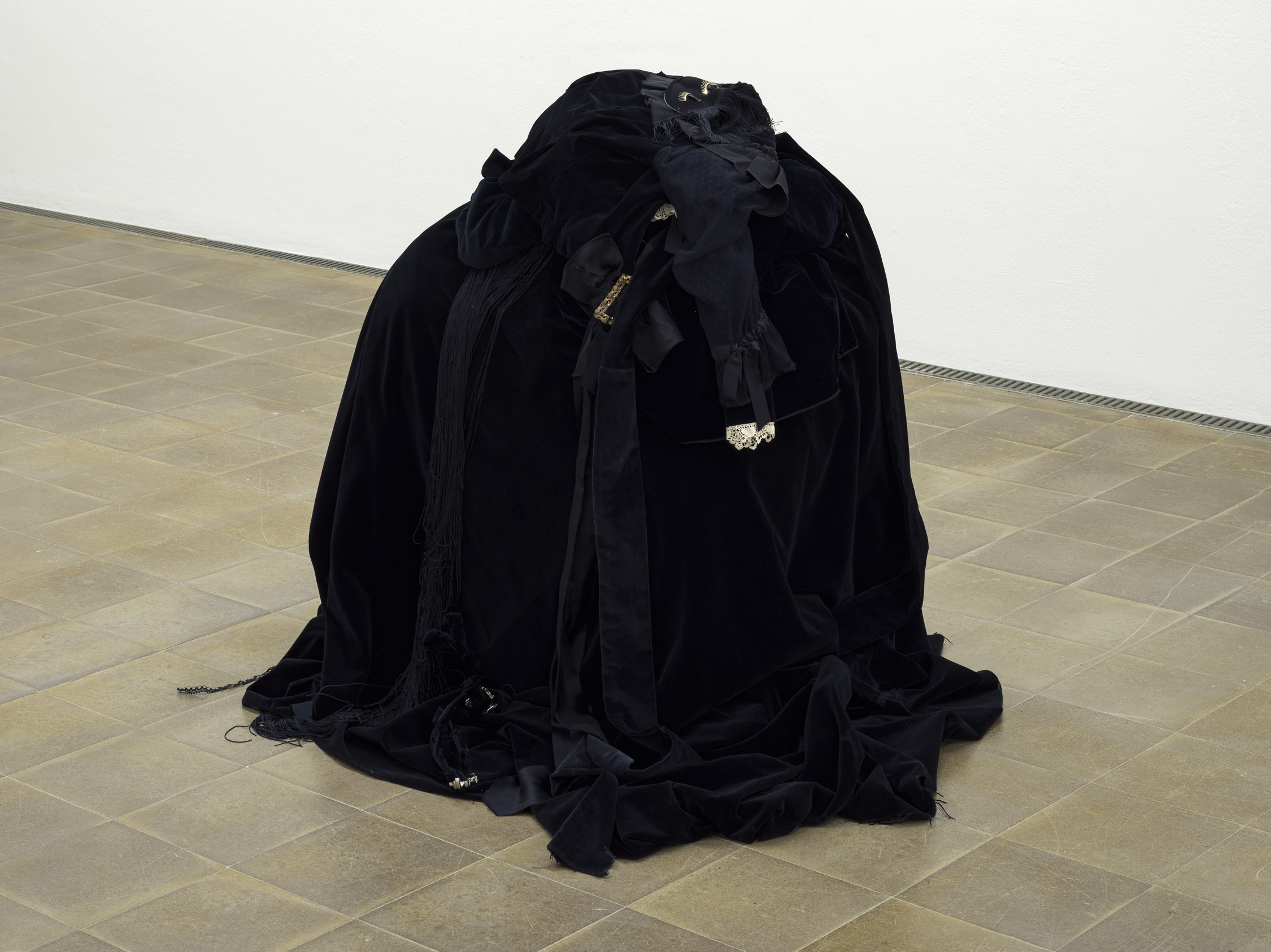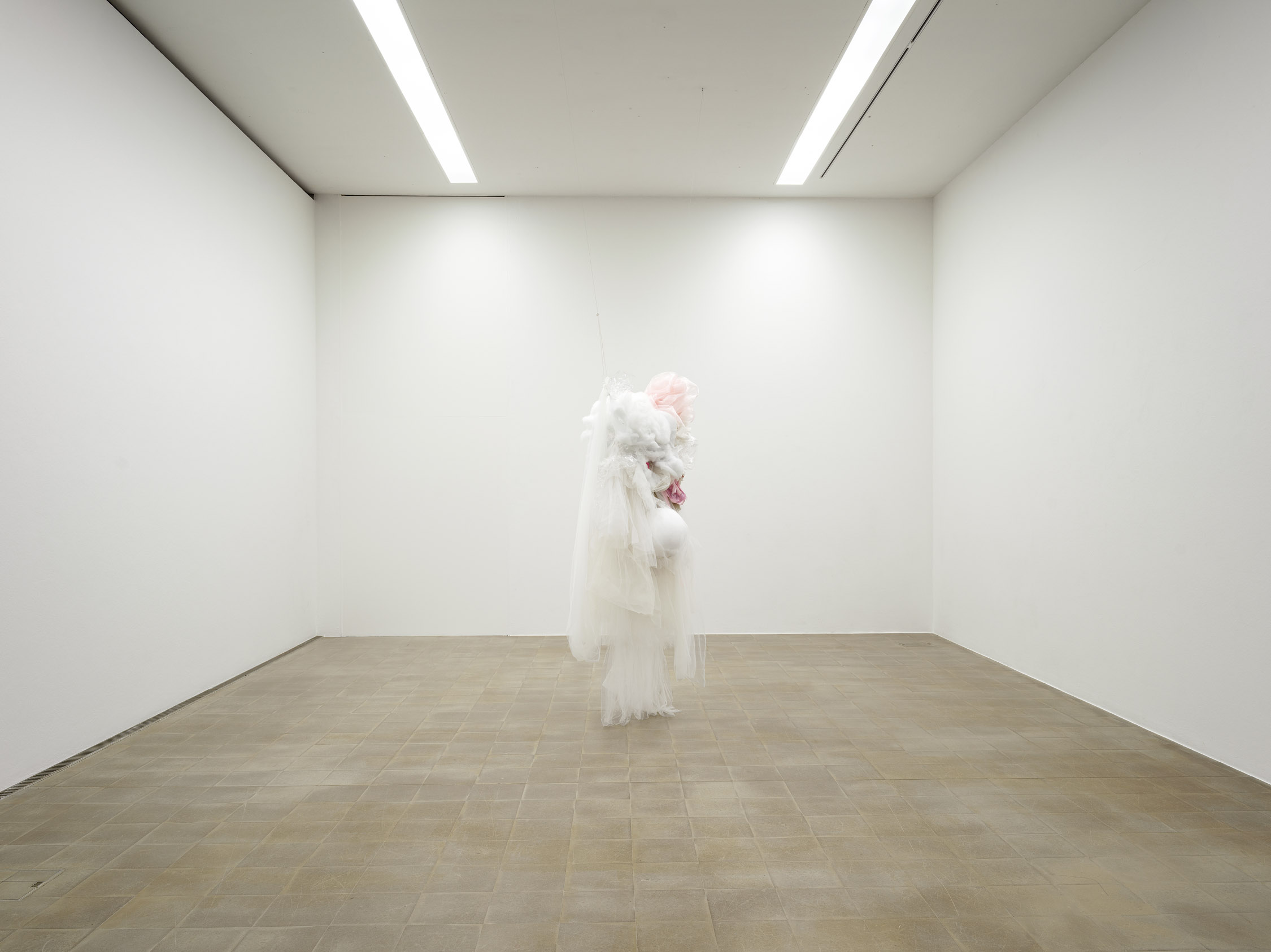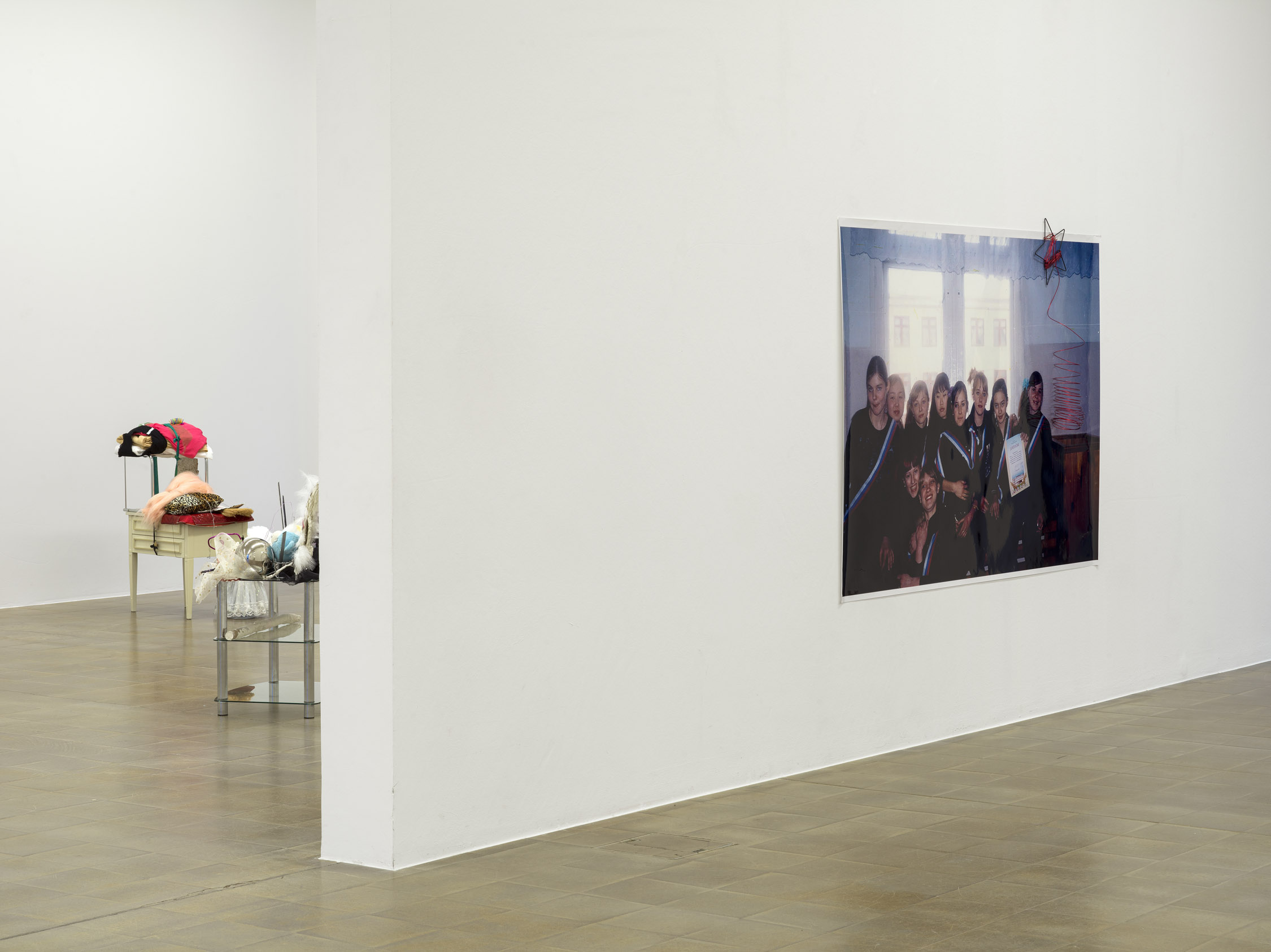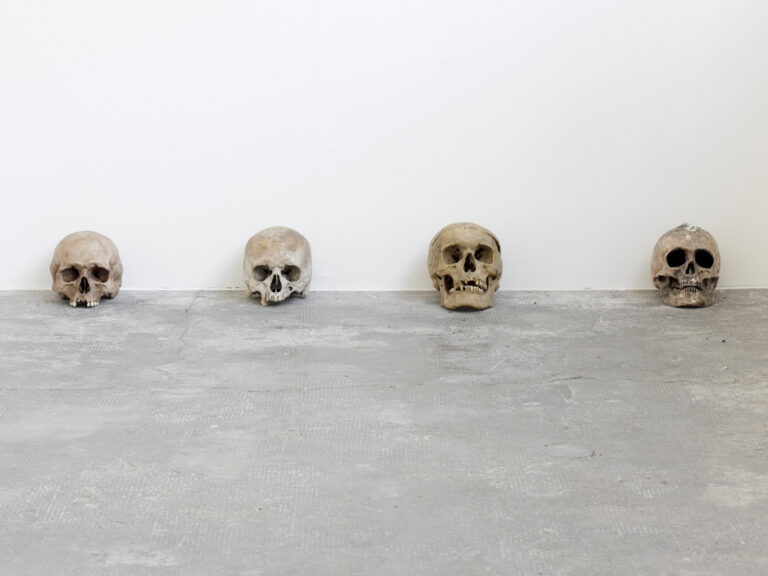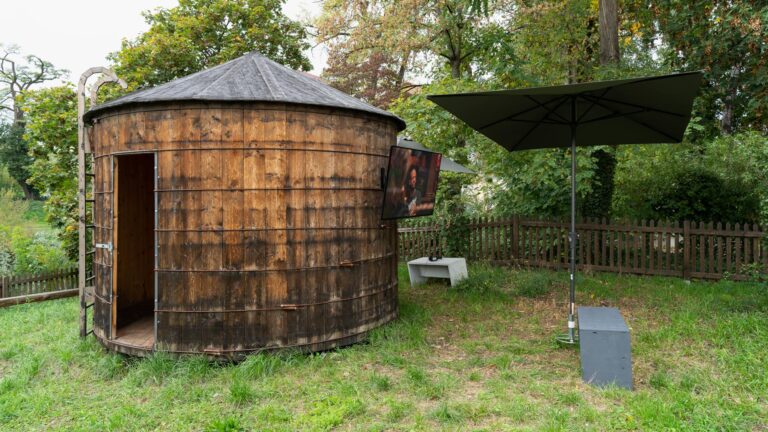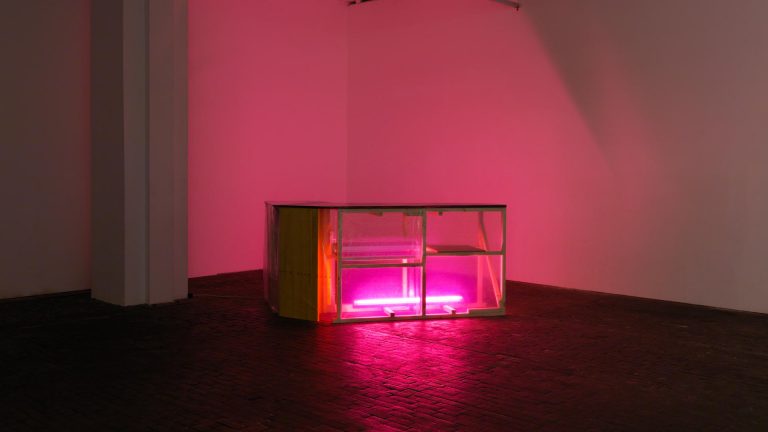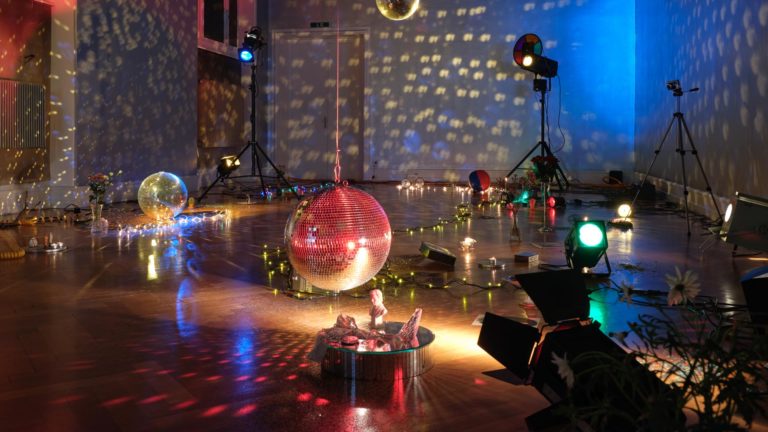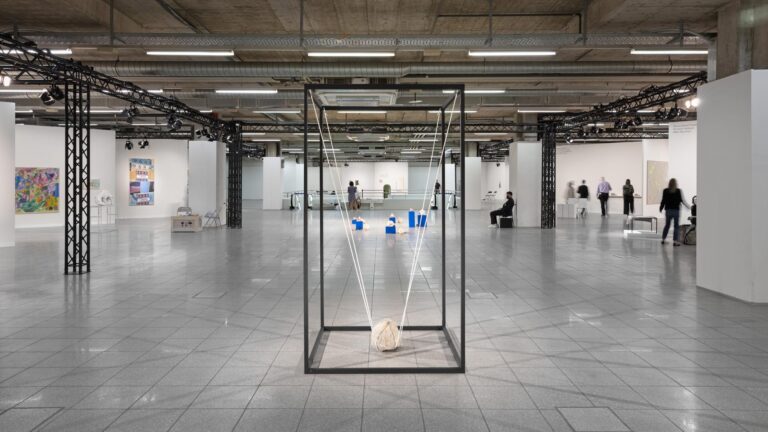Artist: Sveta Mordovskaya
Exhibition title: Costume
Curated by: Paolo Baggi
Venue: Kunsthaus Biel / Centre d’art Bienne, Biel/Bienne, Switzerland
Date: March 1 – May 19, 2024
Photography: all images copyright and courtesy of the artist and Kunsthaus Biel / Centre d’art Bienne
A costume reinforces a status, a specific belonging to a culture. But when it is used as disguise, an identity is distorted. In Sveta Mordovskaya’s work, statements are made by assembling materials picked up in the street, online purchases (cleaning products, fabrics, plastic wrappings) and artists’ materials such as plaster and papier-mâché. When joined together, sometimes by force and coercion, these assemblages show the artist’s relationships with the resources to hand. They may take on biomorphic forms and, so doing, combine with cultural references. The animistic connotations of some of the sculptures may suggest how modernity has appropriated motifs from non-Western art works while devitalizing their active, living roles in social or ritual use.
The only possible form of existence (2024) is a cloth sofa whose cushions have been removed and replaced with a jumble of disparate materials. The proliferation of paper, fabric, plastic and wire speaks of the manic activity of the artist that finds an echo in the two legs twisted around each other. The embedded ocular shapes underline the biomorphic character of the sculpture. Three photographs from the artist’s personal archives hang on the walls, another resource in a physical and emotional proximity. One of the photos is a portrait of the artist as a child, dressed up in a vague costume more or less reminiscent of a character from a European court of the eighteenth century, the Age of Enlightenment and universal values (Artist, 2023). The self-confidence of her pose and her smile contrast with the child’s lack of structure and the improbable social and cultural codes of the costume which are not hers. The feeling of awkwardness is accentuated by the photo’s frame, an old discarded one picked up by the artist and awkwardly fixed around the photo. This idea of misalignment persists and haunts the whole exhibition. In another image, the artist is posing with her classmates in a class graduation photo (Group Portrait, 2023). The red star fastened to the photograph is like a talisman summoning up the strength and unruliness of the group of teenagers into the present moment. But compared to the small format generally used for such personal souvenirs, this assemblage of a decorated private photo has clearly been blown up. The move from a private to a public space seems to have modified its proportions. In its new size, the assemblage loses its private character and becomes an architectural element which opens Costume out to distorting mirror games and surprising reflections. This transformation disturbs the emotional context, perhaps because nostalgia always contains elements of fictionalization and reconstitution. Costume exudes a feeling of quest and failure where the object of desire is vague and its satisfaction uncertain. Untitled (2023) seems to illustrate this. It consists of a pair of red children’s shoes set beside a wooden sword leaning against the wall, nothing else, just the bare minimum for «dressing up». The scarlet shoes remind us of Dorothy’s in the 1939 film The Wizard of Oz. Obligated to take control and grow up all by herself, Dorothy uses her red shoes – whose magical powers are uncertain – to forge her destiny and succeed in her quest to find her native Kansas once again. The combination of the dressy shoes and the wooden sword is enigmatic, even contradictory. Children’s cinema usually keeps to a strict symbolic division of genders and accessories, either masculine or feminine. Dorothy’s journey is an allegory of the psychological path through childhood, where reality is distorted and fantastic, things are trivial and bedazzling, the everyday and the extraordinary advance side by side. Zimmer (2023) illustrates this sort of diffraction in the interior design of the apartment. The photo seems like a fantastic costumed reality, haunted and strange while still familiar. In fact, Untitled (2023) and Costume proceed in a similar way to The Wizard of Oz: the instructions are vague, the accessories are tools of empowerment and the real power is in the hands of the feminine. Quest and failure, childhood recalled; this is a world of shadows, a dream space of revelations where strange, magnified, comical and fantastic creatures act as costumes for our inhibitions. Untitled (black) (2024) uses the codes of sculpture. A pile of black clothes are draped over a stand. The costume looks like a magician’s, a person who has secret or esoteric knowledge, and they themself seem to have collapsed. Costume is built up through these metaphorical journeys where the magician once again reconciles opposites and where a medal is nor really a reward but rather a talisman of an agent of transformation. Sculpture seen as a ceremony, like that of a masked ball.
